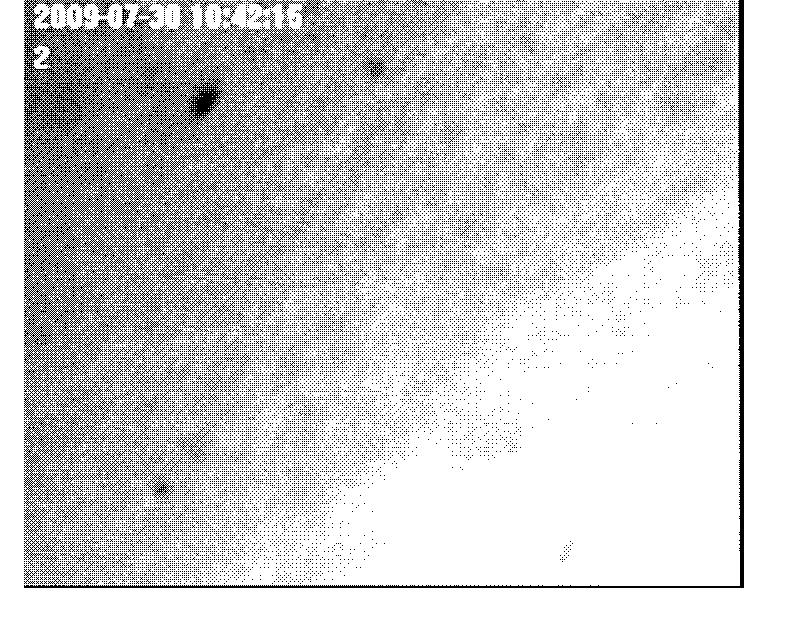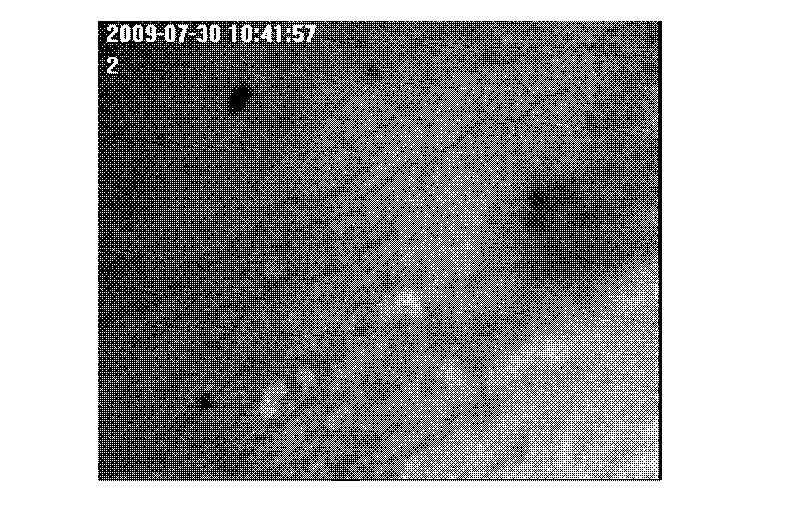Chemical palladium plating solution
An electroless plating, palladium salt technology, applied in liquid electroless plating, metal material coating process, coating and other directions, can solve the problem of difficult to control thickness and other problems, and achieve the effect of shortened life, long bath life and stable plating rate
- Summary
- Abstract
- Description
- Claims
- Application Information
AI Technical Summary
Problems solved by technology
Method used
Image
Examples
Embodiment 1
[0040] Bath composition
[0041] PdCl 2 Mass concentration / g·L -1 2
[0042] Ethylenediamine volume concentration / mL·L -1 50
[0043] Citric acid / g·L -1 20
[0044] NaH 2 PO 2 ·H 2 O mass concentration / g·L -1 12
[0045] Thiourea / mg / L 25
[0046] The pH of the plating solution was adjusted to 9.78 with hydrochloric acid, and a 20×30mm nickel-plated printed circuit board was immersed in the plating solution for 30 minutes, and the temperature of the plating solution was 50°C. As a result, a smooth palladium film having an average thickness of 0.65 µm was produced. The palladium film was observed under a 640-fold optical microscope, and no cracks were observed. At the same time, when the plating solution was cooled, the measured pH was 9.58, with little change in pH. The MTO of palladium is greater than 3.
Embodiment 2
[0048] Bath composition
[0049] PdCl 2 Mass concentration / g·L -1 0.2
[0050] Ethylenediamine volume concentration / mL·L -1 5
[0051] Mass concentration of isopropanolamine / g·L -1 2
[0052] NaH 2 PO 2 ·H 2 O mass concentration / g·L -1 2
[0053] Thiourea / mg / L 15
[0054] The pH of the plating solution was adjusted to 9.8 with hydrochloric acid, and the 20×30mm pre-nickeled printed circuit board was immersed in the plating solution for 30 minutes, and the temperature of the plating solution was 50°C. As a result, a smooth palladium film having an average thickness of 0.15 µm was produced. The palladium film was observed under a 640-fold optical microscope, and no cracks were observed. At the same time, when the plating solution was cooled, the measured pH was 9.66, with little change in pH. The MTO of palladium is greater than 4.
Embodiment 3
[0056] Bath composition
[0057] PdCl 2 Mass concentration / g·L -1 0.6
[0058] Ethylenediamine volume concentration / mL·L -1 15
[0059] Triethanolamine / g·L -1 20
[0060] NaH 2 PO 2 ·H 2 O mass concentration / g·L -1 4
[0061] Bismuth nitrate / mg / L 20
[0062] The pH of the plating solution was adjusted to 9.88 with hydrochloric acid, and a 20×30mm nickel-plated printed circuit board was immersed in the plating solution for 30 minutes, and the temperature of the plating solution was 50°C. As a result, a smooth palladium film with an average thickness of 0.45 µm was produced. The palladium film was observed under a 640-fold optical microscope, and no cracks were observed. At the same time, when the plating solution was cooled, the measured pH was 9.53, with little change in pH. The MTO of palladium is greater than 6.
PUM
| Property | Measurement | Unit |
|---|---|---|
| Film thickness | aaaaa | aaaaa |
Abstract
Description
Claims
Application Information
 Login to View More
Login to View More - R&D
- Intellectual Property
- Life Sciences
- Materials
- Tech Scout
- Unparalleled Data Quality
- Higher Quality Content
- 60% Fewer Hallucinations
Browse by: Latest US Patents, China's latest patents, Technical Efficacy Thesaurus, Application Domain, Technology Topic, Popular Technical Reports.
© 2025 PatSnap. All rights reserved.Legal|Privacy policy|Modern Slavery Act Transparency Statement|Sitemap|About US| Contact US: help@patsnap.com


